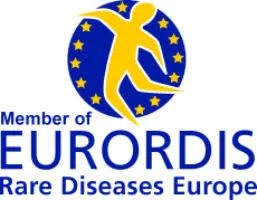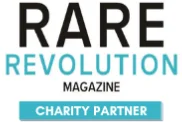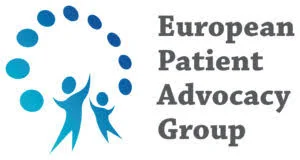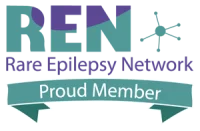Abstract
Ring chromosome 20 syndrome (r(20 syndrome) is an ultra‐rare disease characterized by drug‐refractory epilepsy, cognitive impairment, and behavioural problems. Research and studies are very limited due to the rarity of this condition. However, it is clear those suffering with r(20) syndrome and their families want to participant in research. This paper examines the impact that Ring20 Research and Support UK CIO (Ring20) charity patient group has on those suffering with r(20) syndrome and their families. Results show participants benefited from a sense of community and being offered information. The findings suggest
Ring20 (charity) improves patients’ lives and is essential to future research into r(20) syndrome.
Introduction
Ring chromosome 20 syndrome (r(20) syndrome) is an extremely rare condition in which one of the two copies of chromosome 20 has formed a ring instead of the typical linear chromosome structure. Why this happens and how the structure affects the genes is unknown. It is often associated with mental retardation and behavioural problems that can be progressive, sometimes the behavioural problems precede the epilepsy. Currently, there is no recommended treatment for r(20) syndrome because the seizures usually do not respond to the usual epilepsy treatments. There are two different forms of r(20) syndrome: non-mosaic syndrome, the most severe form where the ring is found in every cell in the body, and the more common form, mosaic syndrome, where the ring is only found in a percentage of cells (Watson, 2014). The literature refers to approximately 200 paediatric and adult individuals with r(20) syndrome (Peron et al., 2020). Although r(20) syndrome has a distinct and recognisable epileptic phenotype, r(20) syndrome is admittedly not well known among clinical geneticists and neurologists. Therefore, r(20) syndrome may be underdiagnosed, especially in this age of genomics.
Research on r(20) syndrome is rather sparse and due to the extreme rarity of the condition, studies cannot examine large samples. However, some have pointed to a possible relationship between the number of affected cells and the age of onset of epilepsy (Elens et al., 2012) and (Giardino et al., 2010). Daber et al. (2012) believes that new technologies related to next-generation DNA and RNA sequencing hold promise for elucidating the precise ring chromosome structure. It has been shown that r(20) syndrome patients and their families are inevitably very committed and knowledgeable to their medical care (Donald et al., 2020). Most of them are willing to participate in research, but it must be practical and realistic to fit into the complex care processes. Working with epilepsy groups could greatly improve recruitment and research impact. Therefore, charities like Ring20 are needed to connect patients and clinicians to further research. Ring20 can provide raw data and study groups and create a much-needed sense of community between patient groups and health professionals. Research suggests we are getting closer to a breakthrough for r(20) syndrome, but slowly due to a lack of participants. Without charities like Ring20 to support these studies, hundreds of people will be negatively affected by r(20) syndrome for longer than necessary.
This literature describes how the Ring20 charity affects the lives of r(20) syndrome patients. The findings show how the provision of services and support improves the quality of life for these patients and their close relationships lives too. Charities like Ring20 are essential to the wellbeing of communities but also to bring awareness through education, for both the public and health professionals.
Methodology
Participants involved a total of 44 people took part in a survey of 10 questions, the participants raged from 18-65 years of age with an average age of 45. With slightly over half of participants being from the UK and a quarter from USA as shown in Graph 2. Participants were mainly direct caregivers of people with r(20) syndrome, sitting at 75% of participants and 15% were r(20) syndrome patients. The procedure involved anyone with access to the link and consented, were encouraged to take part, participants were able to leave comments as well.
Materials such as social media and SurveyMonkey.com were used to create and distribute the questionnaire. The participants were asked “What do you think of Ring20 and the support and services we provide? What support services do you or would you use – please tick ALL that apply..” The items were as follows –
1) Following us on social media, to see what’s going on.
2) Helplines through emails & calls.
3) Being connected directly with other families in your country.
4) Family Conference events, meeting and hearing from experts.
5) Monthly newsletters.
6) Coffee and chat social.
7) Ring20 information website
8) Wellbeing workshops.
9) Being part of a community, not feeling isolated
10) Patient information comics.
Results
Table 1.
The table below shows how many votes were given for each item and the percentage of the votes in relation to the number of participants.
Item | Q1 | Q2 | Q3 | Q4 | Q5 | Q6 | Q7 | Q8 | Q9 | Q10 |
No. Votes | 37 | 19 | 31 | 24 | 25 | 23 | 26 | 21 | 35 | 18 |
Percentage
| 84 | 43 | 70 | 55 | 57 | 52 | 59
| 48 | 80
| 40 |
Graph 1.
The graph below illustrates the findings from Table 1.
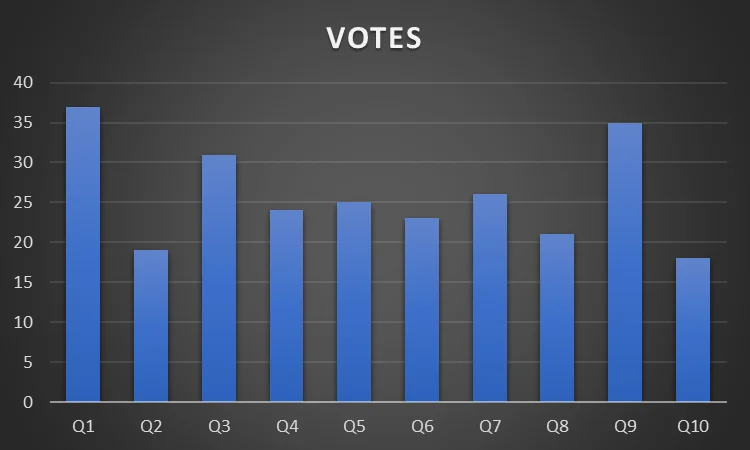
Graph 2.
The graph below outlines where each participant was from in percentage.
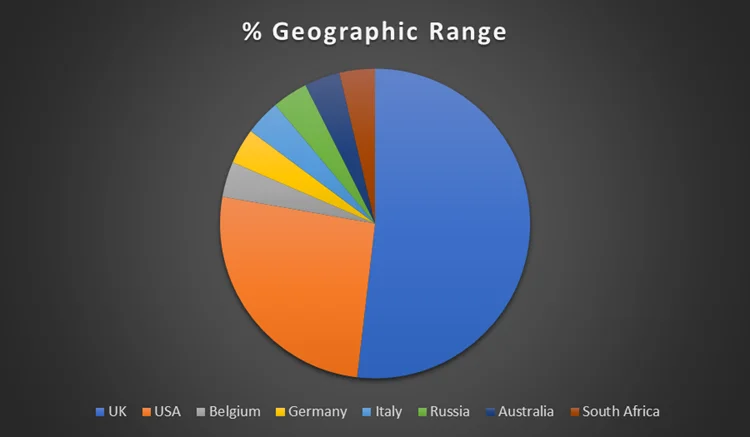
Comments Section 1.
Participants A (PA) –
“I feel all of these things are really helpful to our ring20 community as we are such a small group there is not much info or support out there …so for me it’s really important to stay connected to other people with ring20 and their families and also to see what new research could be coming our way”
PB –
“As one of the newest families affected by R(20), there is just so much gratitude in finding this community and the supports, and knowing we are not alone. I very much value the researched scientific information, but also the real stories from other families. When friends, families, educators and our medical professionals have questions, sending them the link to the website has been incredibly helpful.”
PC –
“I like knowing we’re not alone. As you can feel so isolated and so despairing. Doctors have so little to offer us it’s been fantastic that we’ve been sought out for the Unravel project. We (parents, carers, patients) are all in this together and Ring 20 patient support is invaluable to us. There is absolutely nowhere else that is so well informed about our specific problems.”
PD –
“I feel it’s so important for every one of these points, sometimes we feel so low and alone but being connected to families in very similar circumstances can make us feel we’re all together and can support one another.”
Discussion
As you can see from the results and comments, participants benefit greatly from the support Ring20 provides them. As shown in Table 1, more than half of the 44 participants agreed that 7 out of 10 of the Ring20 services listedwere useful and positively impacted their lives in coping with r(20) syndrome. Slightly less than half agreed that wo out of 10 items were helpful in improving their quality of life. The results suggest that the services and support Ring20 provides have a positive impact on r(20) syndrome patients and their caregivers in managing to cope in daily life.
The research shows that people dealing with r(20) syndrome would like to participate in future studies and that patient-led research would be beneficial in this extremely rare condition. In summary, Ring20’s work not only benefits those who suffer from r(20) syndrome but is also very important for further research and much needed further study of r(20) syndrome to both improve the lives of patients and educate healthcare professionals.
References
Daber, R. D., Conlin, L. K., Leonard, L. D., Canevini, M. P., Vignoli, A., Hosain, S., Brown, L. W., & Spinner, N. B. (2012). Ring chromosome 20. European Journal of Medical Genetics, 55(5), 381–387. https://doi.org/10.1016/j.ejmg.2012.02.004
Donald, G., Allison, W., Archana, D., Laura, C., & Thomas F, H. (2020). Assessing the role of ketogenic dietary therapy in ring chromosome 20 syndrome: A patient‐led approach. ProQuest, 5(2), 295–300. https://doi.org/10.1002/epi4.12387
Elens, I., Vanrykel, K., De Waele, L., Jansen, K., Segeren, M., Van Paesschen, W., Ceulemans, B., Boel, M., Frijns, J.-P., Buyse, G., & Lagae, L. (2012). Ring chromosome 20 syndrome: Electroclinical description of six patients and review of the literature. Epilepsy & Behavior, 23(4), 409–414. https://doi.org/10.1016/j.yebeh.2012.02.008
Giardino, D., Vignoli, A., Ballarati, L., Recalcati, M. P., Russo, S., Camporeale, N., Marchi, M., Finelli, P., Accorsi, P., Giordano, L., La Briola, F., Chiesa, V., Canevini, M. P., & Larizza, L. (2010). Genetic investigations on 8 patients affected by ring 20 chromosome syndrome. BMC Medical Genetics, 11(1). https://doi.org/10.1186/1471-2350-11-146
Peron, A., Catusi, I., Recalcati, M. P., Calzari, L., Larizza, L., Vignoli, A., & Canevini, M. P. (2020). Ring Chromosome 20 Syndrome: Genetics, Clinical Characteristics, and Overlapping Phenotypes. Frontiers in Neurology, 11, 613035. https://doi.org/10.3389/fneur.2020.613035
Watson, A. (2014). Ring 20 research and support. Ring20 Research and Support UK CIO. https://ring20researchsupport.co.uk/


